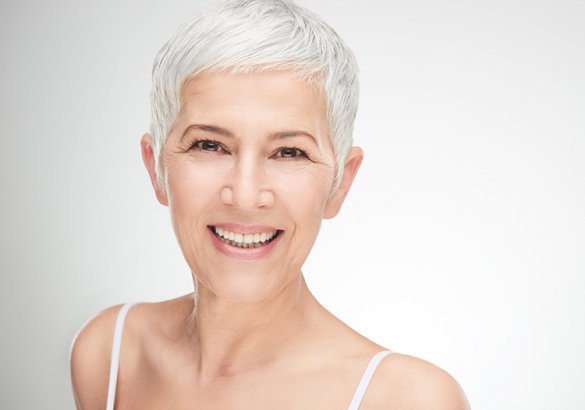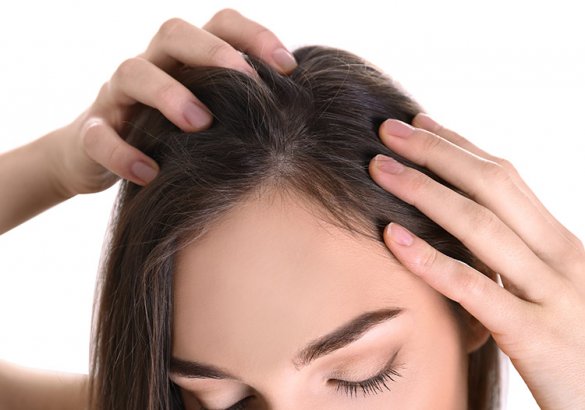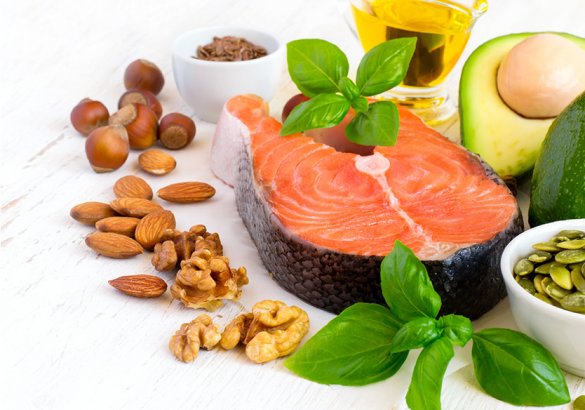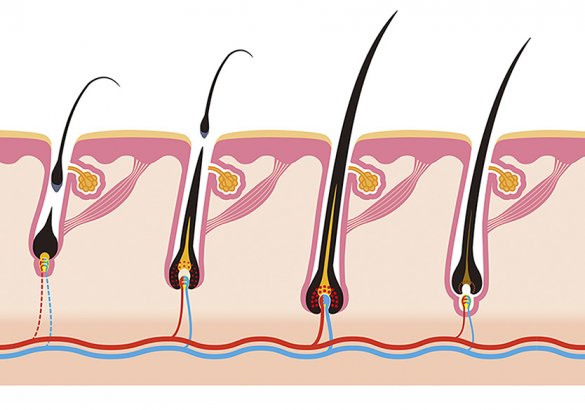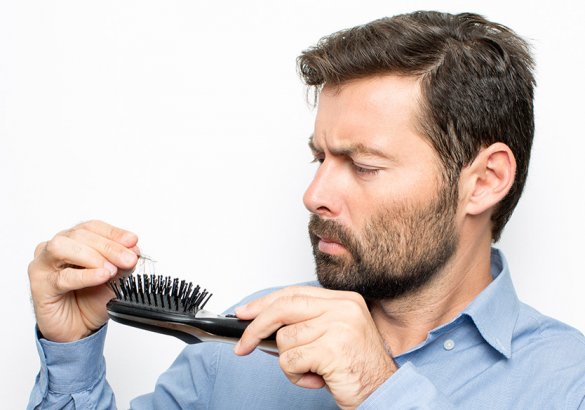-
Grey hair: how to keep it healthy and beautiful
A real nuisance for many women and forever synonymous with old age, grey hair is actually enjoying a revival -
Is your hair healthy? Ask your scalp
We all want thick strong shiny hair and so we invest time and money sourcing the best haircare products. But while tending to focus on the health of our locks -
Foods that prevent hair loss: the omega-3s
The health and condition of our hair is also affected by what and how we eat. -
A closer look at hair loss treatments: the life cycle of hair
Understanding how our body works is the first step towards taking care of it in a correct and efficacious manner. -
Hair loss, when to worry: inheritance and alopecia
When we talk about androgenetic alopecia, we often think about the connection between this condition and inheritance: is it more likely that a person will suffer from alopecia if his close relatives do? -
Hair loss treatment: the 3 habits to avoid for healthy hair
Hair loss is a phenomenon that can have a number of causes. Some of these are physiological, due to the hair’s natural lifecycle; others are hereditary, whereas others still can be caused by the use of certain medicines.
May 13
Everyone knows that blonde hair never goes out of fashion, but, more importantly, it is the most popular colour as it really does flatter any complexion type and comes in so many different shades, from dark honey to platinum. But those who can’t resist the allure of these shades need to know that the only way to get those golden highlights is decolouring, a very aggressive treatment that weakens the hair deep down, modifying its chemical and structural characteristics. Decolouring agents like hydrogen peroxide and ammonia open the cuticles and penetrate the cortex, where the pigments responsible for the hair’s natural colour are to be found. This triggers the oxidation process, whereby the melanin dissolves and becomes transparent, leaving only the yellow of the keratin visible. Decolouring destroys an average of 50% of the sulphur bridges between the hair’s keratin fibres, causing them to become brittle and, in the long term, dry and frizzy. The scalp also comes into contact with the decolouring reagents, causing its sensitisation or physiological alteration.
There are three fundamental rules for healthy decoloured hair: prevent, hydrate and nourish. The best thing would be to start by decolouring gradually, on just a few sections, a less invasive approach that gives a more natural effect and at the same time makes it easier to manage the hair, which would otherwise become dry and frizzy. Another enemy of decolouring is the dreaded yellow effect, far from the perfect blonde, full of volume and highlights. The answer? Purple shampoos, which keep all the shades of platinum and silver bright and lively.
Following these few easy steps will take care of hair and prevent the unwanted effects of decolouring. For example, during styling avoid heat as much as possible, in order not to further stress an already vulnerable head of hair. Air drying is definitely the least aggressive solution, but when this is not an option, simply wrapping the hair in a t-shirt made from microfibre is sufficient; this highly absorbent material will dry it naturally and non-invasively. And for those who just can’t do without their beloved hairdryer, a heat protectant before drying is always recommended, taking care not to bring the heat too close to the hair and avoiding, if possible, the use of flat irons and hot wands.
Even the sun and pool chlorine can weaken and further dry hair. Protect it with a generous dose of conditioner, before pulling on a hat or cap; this will create the right protective barrier.
Another important thing is to avoid washing too frequently. Try to leave hair longer between washes to prevent the colour fading. It is important to choose colour-safe products packed with nourishing ingredients to keep the blonde colour brilliant longer.
But what’s the solution if hair is already damaged? If decolouring has ruined hair, the best solution is always the strengthening action of shampoo containing Hysulf and B group vitamins, such as TRINOV Replenishing Shampoo. Excellent for restoring the hydrolipid balance of the scalp and delivering maximum hydration, indispensable for opened cuticles and fragile, porous, dull hair fibre.A real nuisance for many women and forever synonymous with old age, grey hair is actually enjoying a revival, thanks also to the current enforced lockdown. Silver locks have become a real trend, also with younger ladies and Hollywood divas. From a sign of neglect and source of embarrassment to a true style revolution that pushes back against the taboo of passing time and the obligation to always look perfect at any cost. But the “granny look” is something more than a simple fashion; it stands for every woman’s freedom to express herself and no longer be a slave to regrowth and hair dye. A deliberate choice that is, however, not always a simple one. Yes, because the particular structure of grey hairs makes them weaker and vulnerable, and they therefore require greater care.
Before we find out what kind of care, let’s just say something here: age is not the only reason behind a head of grey hair. While greying hair is traditionally associated with the passing years, it might actually be the result of genetic, metabolic, nutritional and psychological causes. Our genes are what determine our production levels of melanin, the pigment that colours all the hair follicles on our body, which decreases with age.
To this must be added an incorrect lifestyle, like lack of sleep, a bad diet, and stress, or even pollution and smoking, which inevitably produce free radicals that in turn inhibit and damage melanocytes, the cells that synthesise melanin. When hair loses its pigment, it starts to change form, thickness and elasticity. Without these pigments, which are real protective filters, the hair becomes more prone to attack by external agents and subject to keratin oxidation by UV rays, leading to the appearance of unsightly shades of yellow. The production of the scalp’s sebaceous glands slows down too, making the hair drier. Plus, grey locks do not reflect the light either; another factor that makes them look duller.
Grey and white hair is completely acceptable today, as long as it is not dull or yellowish. This is why it is fundamental to use specific haircare treatments that preserve shine and hydration, such as serums and restructuring masks, but also ones that neutralise those yellowy hues, thanks to glycine pigments that even out colour, highlighting the silver strands and smoothing the cuticle.
Care of grey hair also comes from inside: a lack of vitamin B, iron iodine and copper is one of the origins of the drop in melanin production. Eating food rich in these nutrients and proteins helps keep hair glossy, improves its consistency and increases melanin levels.
And for total hair wellbeing there is the TRINOV programme, formulated specifically to make fragile vulnerable hair strong and resistant.
“Greynaissance” or the rebirth of grey, is therefore a desire for self-expression and a chance to get back in the game, but this amazing colour does not suit everyone. Grey hair flatters very pale complexions and, at the opposite end of the scale, very dark ones too. And the cut? Short is the most flattering length for silver locks, because it softens the effect and lends vibrancy to a colour considered old-fashioned and sad. But it is often an excellent solution for taming hair that is thicker and less supple. For those who, on the other hand, want to keep it long, the tip is to dare with layers or a smooth style that gives this extraordinary shade more visibility and bigger impact.
Related articles


